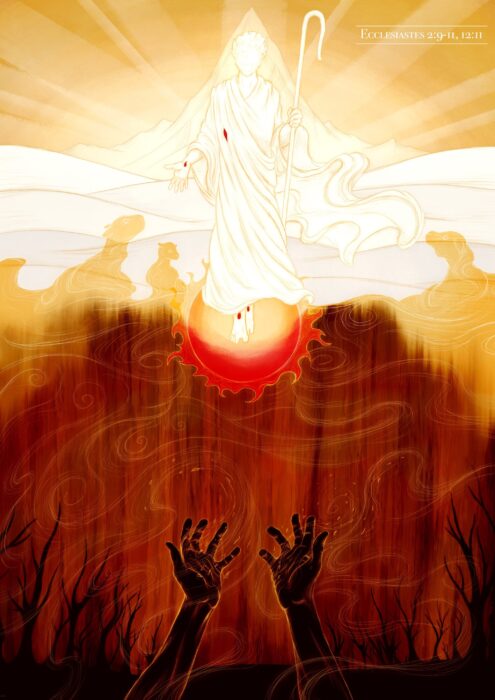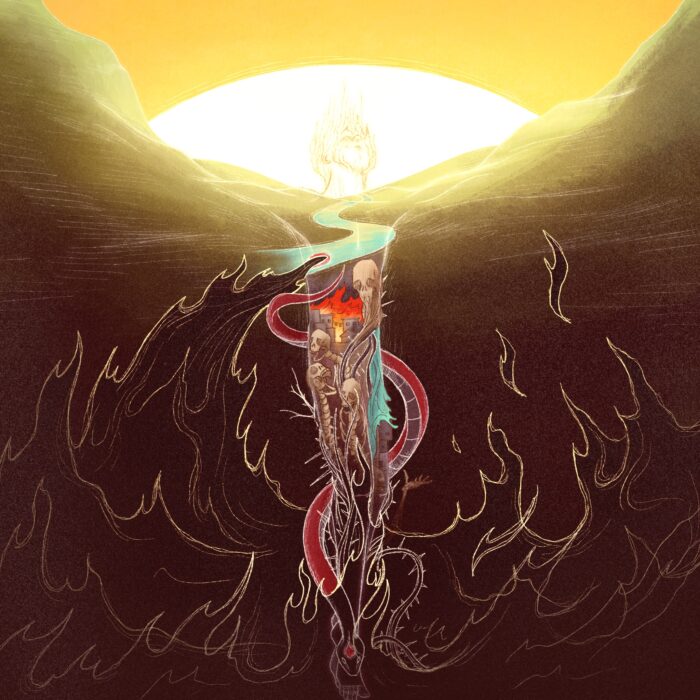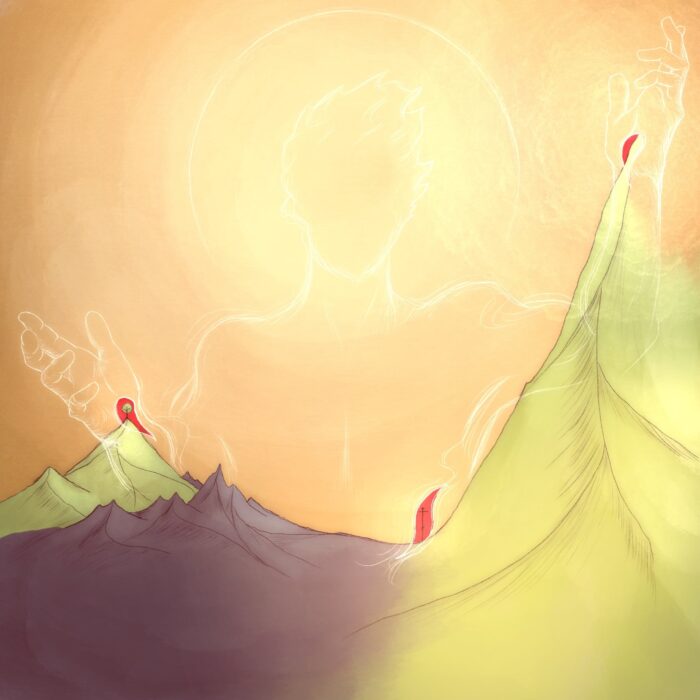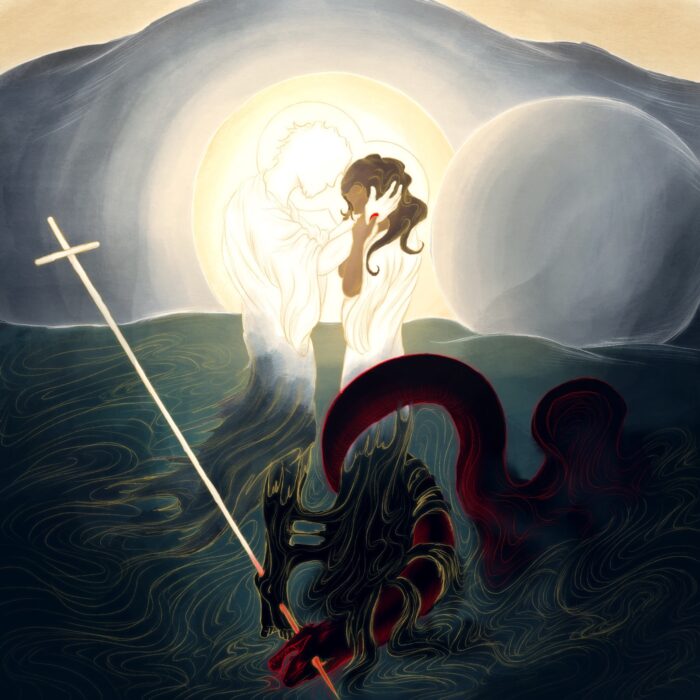
So I became great and surpassed all who were before me in Jerusalem. Also my wisdom remained with me. And whatever my eyes desired I did not keep from them. I kept my heart from no pleasure, for my heart found pleasure in all my toil, and this was my reward for all my toil. Then I considered all that my hands had done and the toil I had expended in doing it, and behold, all was vanity and a striving after wind, and there was nothing to be gained under the sun.
Ecclesiastes 2:9-11 (ESV)
The Passage Explained
Two things are important to note about this passage—and Ecclesiastes in general—before moving forward. First is the term “vanity.”
“Vanity” is the translation that the ESV uses for the underlying Hebrew word,”hebel.” Hebel appears 38 times in the book and understanding what it means is key to understanding Ecclesiastes as a whole. In my work on this picture I am following Dr. Jason DeRouchie and interpreting hebel to mean “enigmatic, frustratingly mysterious.” Calling all of life hebel doesn’t mean everything is worthless or meaningless or empty or fleeting, but rather that “reality is ultimately ‘unfathomable.’ While able to know and understand some truths, realities like the repetitive character of life and nature (1:4—7, 9—10), the soul’s inability to be satisfied (1:8), and the failure of every new generation to learn from the past (1:11) make existence in this present age ‘wearisome’ at best” (DeRouchie)[1]. Life is mysterious, confusing, hard to grasp and impossible to control….and that leads to the next important definition, “striving after the wind.”
The word for striving here has its roots in the Hebrew word for shepherding, thus the phrase might faithfully be translated “shepherding the wind.” So, again, Solomon isn’t necessarily saying that life and our efforts in it are worthless (“striving after the wind,” or the more contemporary idea of chasing the end of a rainbow), rather he is saying that life is ungraspable and our efforts to control and arrange and dictate and anticipate are ultimately foiled—as if we were trying to shepherd the wind (1:14, 17; 2:11, 17, 26; 4:4, 6, 15–16; 6:9). Life is enigmatic, ungraspable, and frustratingly mysterious, and all of our efforts to figure it out are like shepherding the wind…that is the image that Solomon paints for us in this passage and in the book as a whole.
However, in the conclusion to Ecclesiastes, we see one last use of the root word for “shepherd” or “shepherding” and that comes in 12:11,
“The words of the wise are like goads, and like nails firmly fixed are the collected sayings; they are given by one Shepherd.”
Here we find a hint to a glorious answer for life’s enigmas and unfathomable mystery. When we try to get our hands around the ways of life we are consistently baffled and thrown back by a new enigma, a new riddle, a new seemingly unexplainable happening, a new madness of life. We are trying the shepherd the wind. But there is One Shepherd who can and does shepherd the wind. He guides the seemingly capricious winds of life with a wise, steady, and sovereign hand. And though His shepherding seems often to be hebel from our perspective, we have seen His heart at the cross of Christ, and so can entrust ourselves to Him, no matter what the winds may bring.
The Picture Explained
In this image I wanted to present a stark difference between our present experience of life (hebel) and the reality above and beyond our perception (Christ as the Shepherd of the Wind). The wildly spinning and spiraling golden lines represent the unpredictable, enigmatic “winds” of life “under the sun” (which is Solomon’s term for life within the fallen creation). They are golden, however, to hint at their divine origin and the fact that they are under sovereign direction. Since this passage specifically deals with the work of the hands, I portrayed the hands of the supplicant lifted in question and plea to heaven, the dust and ashes of his accomplishments blowing away with the winds. Above all of the confusion and mysteriousness of the fallen world is the red sun. As I mentioned above, Solomon seems to refer to life within a fallen world as life “under the sun,” so the sun here represents the fall and the bondage to corruption and futility to which creation has been subject as a result (Romans 8:19-21). Our confusions, sufferings, and pains in this fallen world are real, and I wanted this section of the image to reflect that.
Directly in the center of the fallen sun are the wounded feet of Christ. His wounds form a sort of transitional barrier between the world where enigma and mystery seem to reign, and the reality that God is the sovereign ruler over all through Son—the Shepherd of the Wind. The wounds are the transition because it was by Christ’s death and resurrection that the God-Man became ruler over all creation and achieved the promise of final curse-dissolution. The centrality of the wounds also serves to remind us—who live under the veil of hebel—that the one who rules reality and shepherds the wind is YHWH Himself—the God of steadfast love and faithfulness who is communicated to us with definitive clarity in the incarnate, crucified, and risen Son. To further solidify YHWH’s supremacy over the confusions of this life, the lines that form the enigmatic winds in the “sub-curse” element of the picture, coalesce into docile sheep under the care of the Shepherd-Son. What looks like unfathomable mystery to us is—and will one day be revealed to have been—the mastered and obedient flock of our Lord.
Finally, in the distance I presented the towering “mountain of the Lord” as a way of pointing ahead to the New Creation. God is guiding every enigmatic wind of life so that—in the end—all things will be reconciled to the Father, through the Son, for the joy of His Spirit-filled people, and the glory of His Name.
[1] This quote, and much of my thinking regarding the message of Ecclesiastes presented here, is taken from Jason DeRouchie’s notes on Ecclesiastes which you can find here: http://jasonderouchie.com/wp-content/uploads/2014/09/OTBM22-Ecclesiastes-DeRouchie.pdf




